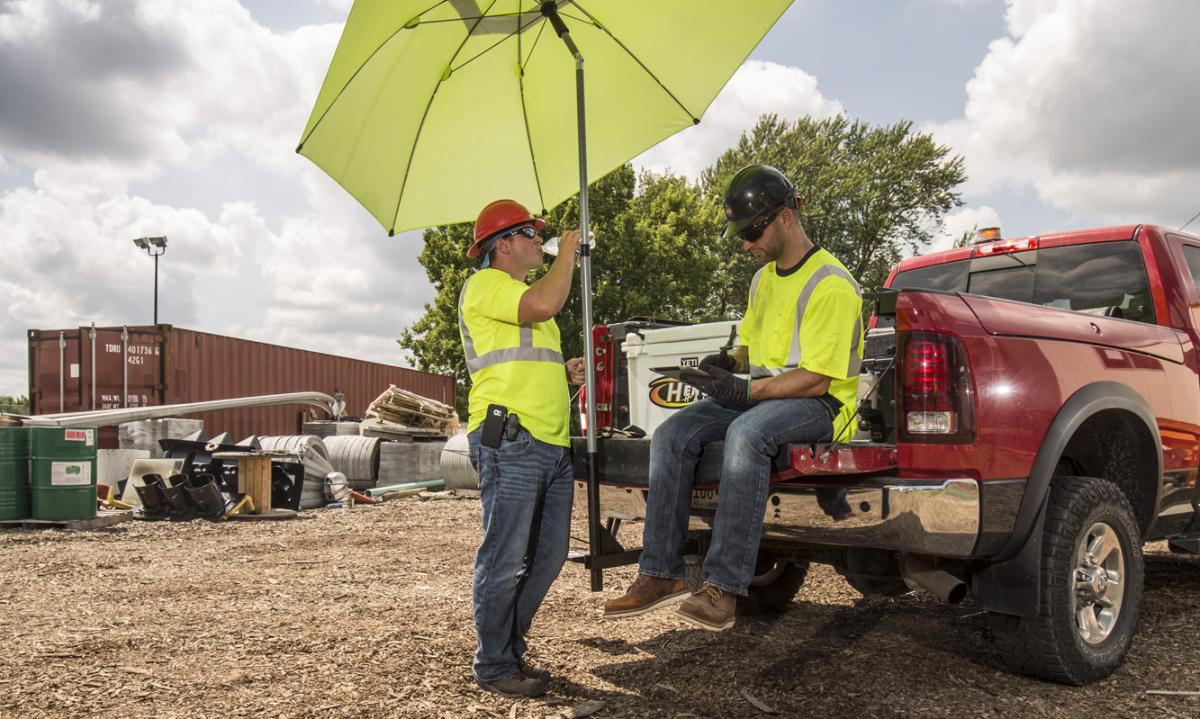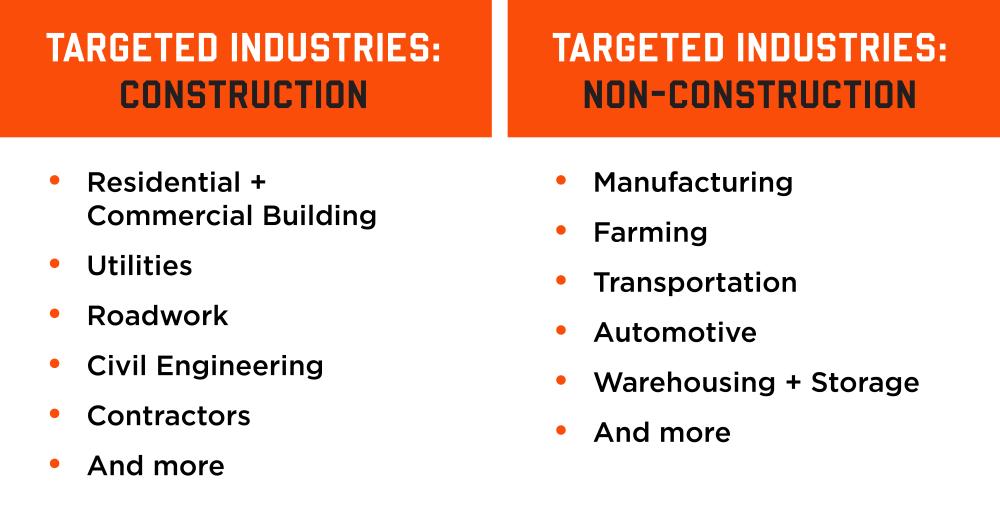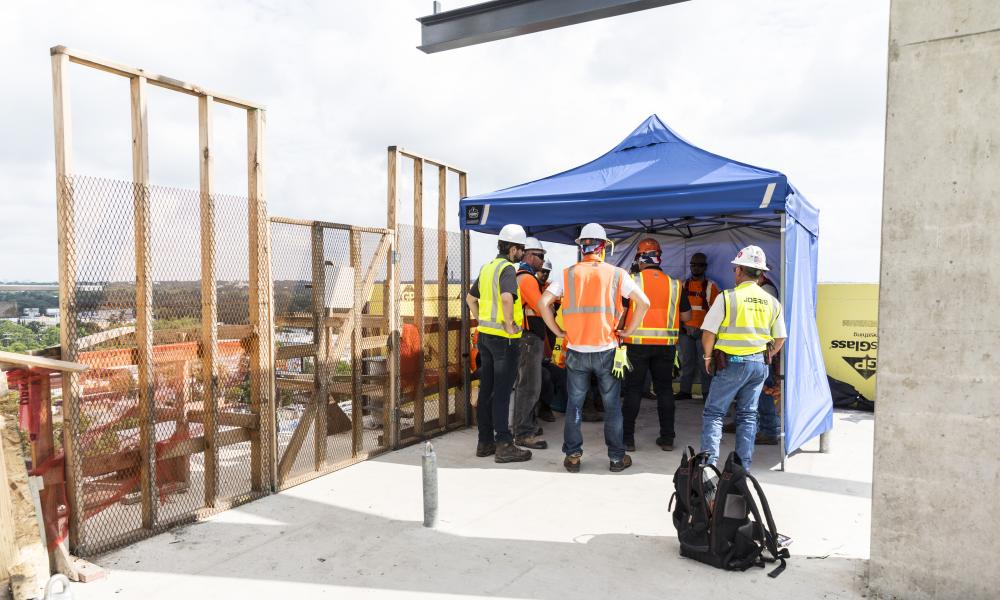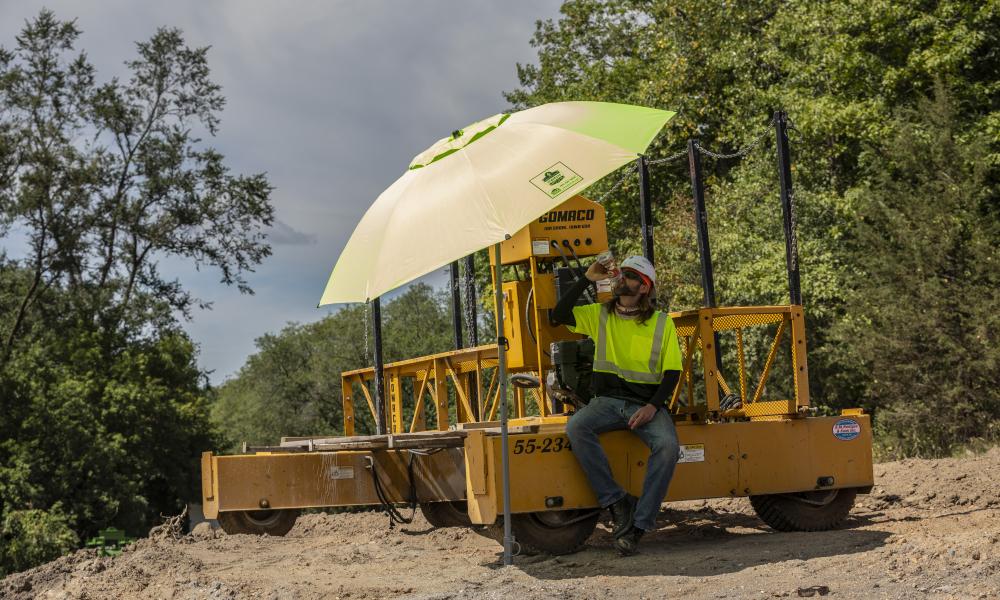OSHA Heat Stress Standard: An Overview of OSHA’s National Emphasis Program for Heat-Related Illnesses

OSHA’s National Emphasis Program for Outdoor and Indoor Heat-Related Hazards was recently launched with the goal of protecting millions of workers from heat-related illness. Here’s what it means for you.
In April of 2022, OSHA launched its National Emphasis Program for Heat-Related Hazards. The first-ever national OSHA standard for heat stress, the monumental program is designed to protect at-risk outdoor and indoor workers from the rising threat of heat-related illness.
Of course, with change, comes uncertainty. And if the bylaws left you feeling a bit befuddled, fear not. Our experts did their homework (+ the extra credit) to answer all of your burning questions about what the new program means for you.
OSHA NATIONAL EMPHASIS PROGRAM FAQ
FIRST THING’S FIRST… WHAT IS A NATIONAL EMPHASIS PROGRAM?
OSHA’s National Emphasis Programs (NEPs) are temporary programs that focus the agency’s resources on particular hazards and at-risk industries. There are currently 11 active programs, including combustible dust, hazardous machinery, lead, trenching/excavation and more. Existing and potential programs are evaluated using sources such as inspection data, injury/illness data, National Institute for Occupational Safety and Health (NIOSH) reports and peer-reviewed literature.
IS THERE AN OSHA STANDARD FOR HEAT STRESS?
OSHA’s National Emphasis Program for Heat is the agency’s first nationwide enforcement measure to protect millions of outdoor and indoor workers from the increasing threat of heat-related illness.
WHY NOW?
As average annual temperatures increase, so does the danger of extreme heat. 18 of the last 19 summers were the hottest on record, with workers suffering over 3,500 heat-related illnesses and injuries each year—a statistic that not only includes outdoor workers, but also those slogging away in foundries, paper mills and other demanding indoor environments.

WHAT DOES THE NEP INCLUDE?
Building upon OSHA’s ongoing initiatives, the NEP greenlights OSHA to conduct heat-related inspections on high-risk worksites while encouraging protective measures such as training, acclimatization procedures, and access to water, rest and shade.
WHAT INDUSTRIES WILL BE AFFECTED?
The NEP targets over 70 high-risk outdoor and indoor industries, primarily within construction and manufacturing where exposure is particularly high. Targeted industries were selected based on recent heat-related incident data recorded by the Bureau of Labor Statistics, as well as the highest number of OSHA heat inspections and OSHA general duty clause violations / hazard alert letters over a 5-year period.

HOW LONG IS THE NEP IN EFFECT?
Effective April 8, 2022, the NEP will remain valid for three years unless canceled or extended.
OSHA INSPECTIONS
WHEN WILL OSHA INSPECTIONS OCCUR?
OSHA will initiate inspections on days the National Weather Service has announced a heat warning or advisory for the local area. If the heat index is 80°F or higher, inspectors and compliance specialists will engage in outreach and technical assistance to help keep workers safe.

WHAT CAN YOU EXPECT DURING AN OSHA INSPECTION?
During inspections, compliance safety and health officers (CSHOs) will:
- Review logs and incident reports for entries indicating heat-related illness, as well as records of heat-related ER visits and ambulance transport
- Interview workers for symptoms of heat-related illnesses, including headache, dizziness or dehydration
- Review employer’s plans for addressing heat exposure and associated training records Identify all conditions and activities relevant to heat-related hazards
When all elements of a violation are established, Area Directors are responsible for issuing citations for hazards under the General Duty Clause. Hazard Alert Letters (HALs) may also be sent.
WILL SITES BE NOTIFIED PRIOR TO INSPECTION?
While OSHA Area Offices will be working from established at-risk industry lists, inspection sites will be chosen at random on high heat days.
HOW TO PREPARE FOR OSHA'S NATIONAL EMPHASIS PROGRAM FOR HEAT ILLNESS PREVENTION
OSHA OUTREACH + ON-SITE CONSULTATION
In addition to inspections, OSHA Area Offices will conduct nationwide outreach to help targeted industries better understand the risk and implement best practices for heat illness prevention. A major component of this will be OSHA’s free On-Site Consultation Program. Separate from policy enforcement (meaning no penalties/citations), this service assists small and medium-sized businesses in developing strategic approaches for addressing heat-related illnesses.
HEAT ILLNESS PREVENTION CONTROLS
Failing to prepare is preparing to fail. As with most worksite risks, heat-related illnesses can be prevented using a combination of engineering controls, administrative controls and good ol’ fashioned PPE.

Heat Stress Engineering Controls
- Air conditioning, fans + increased ventilation
- Natural shade + portable shelters
- Reflective shields to redirect radiant heat
- Sealing steam leaks by insulating water vapor pressure
Heat Stress Administrative Controls
- Risk, symptom + first-aid training
- Acclimatization
- Regular hydration
- Scheduling + pacing of work based on time of day
- Frequent breaks
- Reduced physical demands
Heat Stress PPE
- Cooling towels, vests, headwear + hard hat accessories
- Moisture-wicking or absorbing sweatbands, headwear + other accessories
- Polarized safety glasses
- Sunscreen
- UPF rated apparel
Our NEP Expert Breakdown
Al B:
Welcome everybody to Radio Free Tenacity, the Voice of Worker Safety. Here today to talk about the National Emphasis Program on Heat Stress and to kind of unpack and parse out what that all means to you, what's important to you. We've got our heat stress expert, Alsie N: Nelson, in the house. Alsie N:., thanks for joining us.
Alsie N:
Thanks for having me.
Al B:
So let's start out right now right away and explain what a National Emphasis Program is.
Alsie N:
Good question. I'm happy that we're kicking it off this way. So OSHA has a National Emphasis Program, also known as an NEP, and it is a temporary initiative that they put in place to address a variety of high risk areas. It can range between combustible dust, what we're talking about today, which is heat stress. And currently there are around 11 NEP’s in place through OSHA.
Al B:
Okay. All right. That seems like a pretty high number. So why a heat stress NEP now?
Alsie N:
So you know people are probably pretty familiar with what's been going on globally within the climate, but our temperatures are getting warmer. 18 of the last 19 years have been the hottest on record. We are continuing to see that trend happen year over year. NOA, the National Oceanic and Atmospheric Administration, continues to predict that this will happen. So I think what OSHA is saying is we're seeing almost 4,000 heat related injuries reported each year, and it is something that we need to address within the workforce.
Al B:
Okay. All right. Makes sense, totally. I was wondering if you could then kind of unpack what the National Emphasis Program, NEP, is? Like, what does that mean to somebody out on the job site?
Alsie N:
Yeah. Another good question. So what the heat specific NEP means for employers, as well as workers, is a few different things. The way OSHA has outlined this program is, it exists for three years. It was initiated April of last year, so we are currently in year two. It will either last through the next two years unless it's extended or canceled. I don't foresee either of those things happening. And it's really a fact finding mission for OSHA. They want to better understand how different employers are handling heat on the job site. Whether that be within indoor settings so manufacturing. Could also be outdoor agriculture, construction, highway workers. And their plan is to address heat any time the average temperature is above 80 degrees Fahrenheit or if the National Weather Service has issued a high heat day. So they will red flag those days as inspection days.
Al B:
Okay. All right, so then kind of sticking with the inspections. When do those occur? And, you know, you mentioned that the NEP at this point is sort of a fact finding mission. Are these inspections more of a collaborative effort on the part of OSHA and the powers that be? Or can people get fined at this point?
Alsie N:
It's a little of both. What you can expect if you are an employer and OSHA knocks on the door is they will want to see your record keeping, your 300 logs. They will want to interview the workers to see if there's been any incidents and how they felt or dealt with those incidents specifically. More importantly, they just want to ensure that there's thought being put into a prevention plan. I would say the best thing that someone can do is proactively in good faith, do a site survey. And be thinking about where the highest levels of risk are in that specific work environment and what can be done to to reduce that heat burden for the worker. Whether that be work/rest schedules, additional breaks, different types of cooling PPE. You think about airflow on a job site, if you're inside and it's a high heat environment, how can you get more airflow to properly allow cooling PPE to work? Cool that person's body. So there are a variety of different things. But at the end of the day, for the most part, OSHA just wants to know that in good faith, every employer is working to protect their workers and their employees from that heat burden. They do definitely want a partner in some cases, there has been citations and fines. In other cases, they will help. They're going to want to work with you to build a plan and they're going to want to say, let's document this. We will come back, re-inspect and make sure the plan that we have in place, given the site survey that we did with you, is effective and is working for your workers as well as yourself.
Al B:
Right on. And I think you touched on a couple of really important things here, too. A lot of times when we're talking about heat stress, maybe our first reaction is to go to an outdoor job setting where you're, you know, you're out out under the sun. But this definitely relates to indoor work environments, too, correct?
Alsie N:
Correct. Yes. Both indoor and outdoor.
Al B:
Yeah. And then the other question I had in terms of the inspections, and I know a lot of people have the same question, is there are people getting warned ahead of time, so to speak, or are people just popping by, seeing what's up?
Alsie N:
Another good question. They can be programed and unprogramed, which essentially means planned or unplanned. The marker for an inspection is, again, a high-heat priority day, so that 80 degree Fahrenheit day, or above. In indoor facilities, they will be chosen at random. All of the inspections will be randomly selected. But for an indoor specific facility, that can be pretty much any day if the work environment has a heat above 80 degrees Fahrenheit. So typically, I do believe they will be unplanned. But if you're watching your thermometer and paying attention to that, you can have a better idea of when to potentially expect a knock on the door.
Al B:
Okay. That that helps clarify it a bit for sure. So then going back to what you were talking about. You know, officers, compliance officers wanting to see that a good faith effort is being made on the job site to keep workers safe. You know, you mentioned a handful of things there. And I know OSHA's prescription for so many years now has been water, rest, shade, with that program. One other thing that we like to discuss as well and that a lot of other experts say is something that is relatively ignored. You've got the water, rest, shade, people get that. But then there's this aspect of body cooling. Right? And the importance of body cooling. I'm wondering if you could kind of just quickly take us through a couple quick examples of how site managers might incorporate that within their good faith effort to keep workers safe?
Alsie N:
Yeah, absolutely. So there are different types of body cooling. I know today we have a couple examples here. Within the technology world, you have evaporative, which requires water and airflow. Evaporative products and then you have non-evaporative, which you'll typically see is like a phase change product. Both of them are going to cool anywhere between say, 10 and sometimes up to 20 degrees cooler either than ambient air or will help cool the surface temperature of the skin. Ultimately, what's really nice about cooling PPE, especially vests that will sit on your core, is not only is it going to make that worker more comfortable which ultimately means they will be more productive, but it will also help to pull heat away from the surface of the skin. If you're familiar with your body's natural response to heat, you dissipate through sweating. A lot of the cooling products, cooling PPE, have moisture wicking elements to it that will pull sweat off the surface of the skin. That will help reduce the heat burden on the body. You’ve probably been outside on a hot day and you're sweating and a cool breeze comes by and pulled that off the surface of the skin. It feels incredible. You want to pull the moisture in the sweat off the skin to ultimately help cool the body, which is what a lot of the cooling products will do for you.
Al B:
Okay. All right. And I think that makes sense. You've got two examples here. Kind of run through what they are and when they would be used, I guess.
Alsie N:
So this example, this is made of PVA material or Polyvinyl Acetate material. Really easy to activate. This is actually a non-activated vest. You just have to saturate it in water. That's all it takes. Dunk it. Soak it. Whatever it is, it will sponge water in within 1 to 2 minutes. Once it has access to airflow, it will start that evaporative cooling process. You're going to want to wear it on your core. Obviously, this is a vest. I would recommend a light t-shirt, cotton t-shirt underneath, just as that middle barrier. But very easy to activate. Lightweight so it's not going to add additional weight to the body. And just a very easy product to reactivate too. And from a care and maintenance perspective, machine washable. Everyone loves that.
Al B:
Sweet, yeah!
Alsie N:
Easy to take care of.
Al B:
And I know one thing with this vest, too, and I know from experience from wearing this vest, is people might think, “Oh, wet evaporative, you put it on, it might be like sloggy and wet”. And it's really not that way at all. Like you said, the material really sponges up that water really well. So yeah, it's going to be a little bit damp, but it's not like you're going to be dripping wet, right?
Alsie N:
Yes, exactly. That can be a very common misconception with this product. PVA material, it feels relatively dry to the touch even though it is holding water.
Al B:
Cool. So then this, as you were saying, good for mainly outdoor applications. Low humidity. Making sure there's a nice breeze to activate it. We've got this other phase change vest here. Walk me through that.
Alsie N:
Yeah. Good question. So what I like to make sure people understand is we're talking through different types of cooling products. There is not a one-size-fits-all solution. You really have to know what type of heat exposure you have, what that heat burden is like. What are those environmental variables that you have to take into consideration. So you can effectively find the right cooling products. This is a phase change vest. These are the phase change packs. We recommend these for individuals who work in environments, typically high heat indoor settings. So think manufacturing, welders, foundries. What's really nice is once you activate these packs, they look like water right now. If you put them in a refrigerator, a bucket of ice water, a freezer, they will solidify. They're going to look like ice. They're not ice.
Al B:
Okay.
Alsie N:
What's really great about phase change is they don't condensate like ice packs. And they stay at one constant temperature for 2 to 4 hours. So these packs will stay at about 64 degrees Fahrenheit, which is what we've determined as one of the better temperature ranges to place on your core. Contradictory to what people think, you don't want ice on your core. That's not good for you. It's not good for your skin. You can get frostbite. It's also not, you can put your body into shock. So a 64 degree temperature is really going to help thermal regulate your body's internal temp. And we were just doing kind of a compare and contrast here, but you don't have to worry about environmental variables with phase change. You don’t have to worry about having access to water. You don’t have to worry about airflow. It's going to maintain that temperature for the duration of the time that it's activated, which is really great for those workers. Especially those who are wearing, you know, fire resistant clothing or they have a hazmat or an impermeable suit on. They need something in between their body and that suit to help keep them cool. And a lot of times there's no airflow there.
Al B:
You bring up another great point. And, you know, people's PPE adding to the heat. So, yeah, some some good suggestions here to kind of help mitigate that. Well Alsie N:, thank you so much for stopping by and walking us through the NEP and some of the ways to to maintain cool body temps. If anybody out there watching or listening would like to learn more about the NEP or heat stress risk, illness, injuries. Go on over to ERGO.ZONE/HEAT and there's a bevy of information there. Thanks again everybody for tuning in. Stay safe out there people.

